How can a gymnast maintain a healthy weight?
2 CommentsHow can a gymnast train well but maintain a healthy weight with all this pressure?
Yesterday’s blog looked at incidents that happened years ago when eating disorders were not well known and the training was very different. Gymnasts’ weight were under scrutiny.
Those severe cases are hopefully less frequent with better-educated coaches and different role models.
If you watch gymnastics now, the body shapes are all different and they still get the results they need.
Take Nastia Liukin and Beth Tweddle. Both very different body shapes but both have won Olympic titles! Still, young female gymnasts don’t live in a vacuum and society itself places immense pressure on the female body image.
Gymnasts need balance…
in their diet as well as on the beam. Carbohydrates are the body’s preferred source of energy. Gymnasts will be burning huge amounts of energy so this is vital in their diets. Complex carbohydrates are needed to give the gymnast a long sustained amount of energy.
You can get these from vegetables and wholegrain/wholemeal foods. For a quicker burst of energy, simple carbohydrates from fruit and sugars can give this. But, too much of anything can be bad. Too much carbohydrate can lead to weight gain if the energy is not used afterwards. Around 60-65% of the gymnasts daily diet or 5-8g/kg/day should be enough.
Protein is vital to help recovery and support of the muscle tissues. Male gymnasts usually require more than female gymnasts. 12-15% of the daily diet or 1.2-1.7g/kg/day is needed. Sources include meats (chicken, turkey) fish, eggs and nuts.
Fats should make up the remainder, 20-35% of the total calories. Fats are another source of energy and can help transport nutrients around the body. However, the type of fat is important. Limit the amount of trans fats, these are found in processed foods. Natural fats are best and are found in nuts, meat, oily fish and olive oil.
What should a gymnast be eating before and after training?
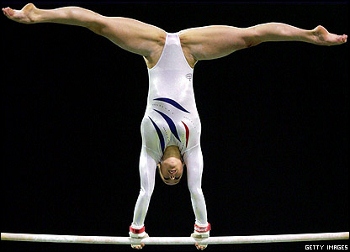
Beth Tweddle is an example of healthy gymnast
Try and eat 1-2 hours before training. A small meal including complex carbs and fluid intake should be enough to give the gymnast a sustained level of energy throughout training.
After training, having a meal that is protein-based will help the muscles’ recovery process, and carbohydrates will replenish the energy stores.
If you have to travel, eating something like a banana or an apple within 30 minutes after training will help replenish energy stores too. This is important if there is more than one training session in the day.
Gymnasts should stay hydrated during training too. Depending on how long a training session is, an energy drink can help sustain energy or a small snack will help keep them going too (How to make your own sports drink)
During competitions, a gymnast does a lot of waiting around. It is vital that they stay hydrated throughout the day. Small and regular sips will help this. A light breakfast and regular snacks like fruit or nuts will maintain their energy levels (more on competition eating here).
If you want to see how a healthy diet looks in action, then watch this video, aimed at adults but something the whole family can do.
Conclusion
Gymnasts need to eat more than the average person because the energy expenditure is more and their bodies require more energy to help recover afterwards. Nowadays, gymnasts like Beth Tweddle are proving you don’t have to have a tiny frame to excel at the sport.
All body shapes are able to perform at the highest of standards. Supporting your body with the right foods and amounts of these foods and training hard will make a champion, regardless of body shape.
This is something we take seriously at the Excelsior ADC gymnastics club
If your club coach is obsessed with a gymnasts’ weight, then speak to the club welfare officer.
Gemma Robertson
Further reading:


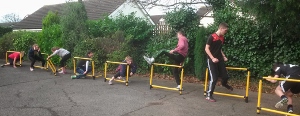 I have been working with England Golf for the last 15 months, coaching the South West under 16s boys and girls squads.
I have been working with England Golf for the last 15 months, coaching the South West under 16s boys and girls squads.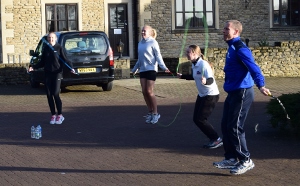 We started the good habits necessary when we held a joining boys and girls assessment weekend in September. I wanted the candidates to be clear from the start what the program would involve: like running! That way there would be no misunderstandings later.
We started the good habits necessary when we held a joining boys and girls assessment weekend in September. I wanted the candidates to be clear from the start what the program would involve: like running! That way there would be no misunderstandings later.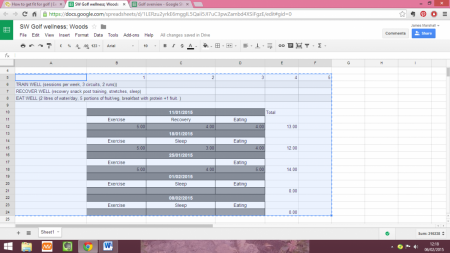
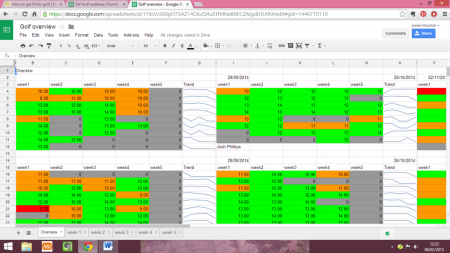 The grey areas are where the gaps are, the green amber and red indicate how successful the golfer has been overall. I can then look at the individual scores for each golfer week by week.
The grey areas are where the gaps are, the green amber and red indicate how successful the golfer has been overall. I can then look at the individual scores for each golfer week by week.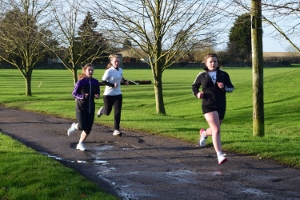 My main aim at the start was to get the golfers thinking about these areas every week. There were accountable for filling in 3 numbers.
My main aim at the start was to get the golfers thinking about these areas every week. There were accountable for filling in 3 numbers. Whilst it may appear we got off to an inauspicious start, over half of the squad were really having a go and making themselves fit.
Whilst it may appear we got off to an inauspicious start, over half of the squad were really having a go and making themselves fit. The girls especially nailed the recovery snacks, but most of them were making a real effort to change their behaviour.
The girls especially nailed the recovery snacks, but most of them were making a real effort to change their behaviour.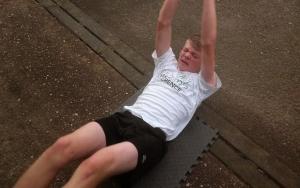 We are now in the situation where 80% of the squad members are really trying to get better.
We are now in the situation where 80% of the squad members are really trying to get better.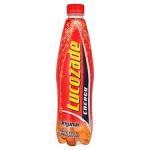 A frequently asked question. While listening to a speech at a coaching conference recently, I heard that if plain water was cool or sleep could be bottled, you could make a lot more money.
A frequently asked question. While listening to a speech at a coaching conference recently, I heard that if plain water was cool or sleep could be bottled, you could make a lot more money.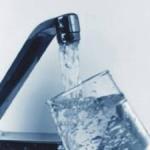 The effects of drinking water during exercise are to cool you down and to rehydrate you. During other times, it helps to increase the mineral and vitamin absorption of your daily diet.
The effects of drinking water during exercise are to cool you down and to rehydrate you. During other times, it helps to increase the mineral and vitamin absorption of your daily diet. Redbull is very different to lucozade and unrecognisable to water. If there is a scale of health water is at one end and Redbull the other.
Redbull is very different to lucozade and unrecognisable to water. If there is a scale of health water is at one end and Redbull the other.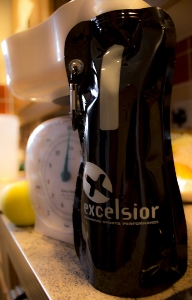 The original question is very difficult to answer in my opinion. Lucozade is good for what water is not, increasing and maintaining energy.
The original question is very difficult to answer in my opinion. Lucozade is good for what water is not, increasing and maintaining energy.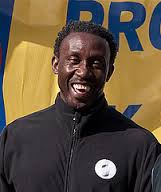 Creatine supplementation became popular with athletes following the 1992 Summer Olympics in Barcelona, Spain, when gold medal winners Linford Christie and Sally Gunnell revealed that creatine was a factor in their success.
Creatine supplementation became popular with athletes following the 1992 Summer Olympics in Barcelona, Spain, when gold medal winners Linford Christie and Sally Gunnell revealed that creatine was a factor in their success. When your muscles contract, the initial fuel for this movement is a compound called ATP. ATP provides its energy by releasing one of its phosphate molecules. It then becomes a different compound called ADP. Unfortunately, there is only enough ATP to provide energy for about 10 seconds, so for muscle contraction to continue, more ATP must be produced.
When your muscles contract, the initial fuel for this movement is a compound called ATP. ATP provides its energy by releasing one of its phosphate molecules. It then becomes a different compound called ADP. Unfortunately, there is only enough ATP to provide energy for about 10 seconds, so for muscle contraction to continue, more ATP must be produced.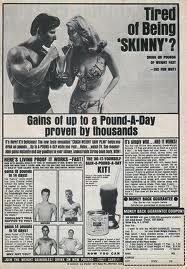

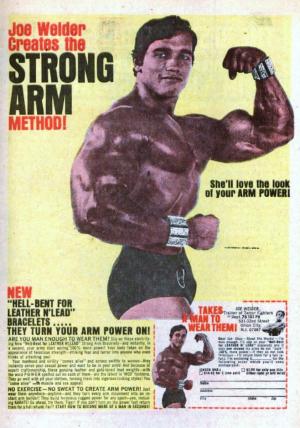
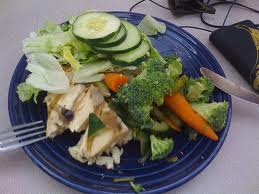
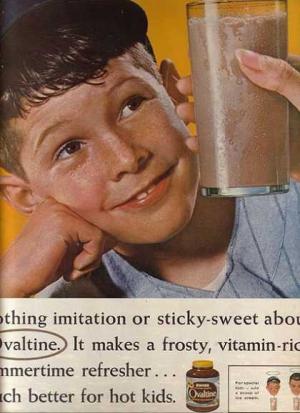
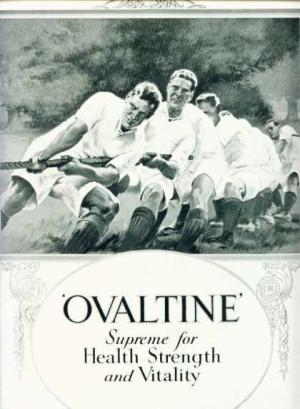 Apart from protein the one supplement I have found to definitely give noticeable results is creatine.
Apart from protein the one supplement I have found to definitely give noticeable results is creatine. The final thing to remember before jumping in and purchasing the latest super duper product promising gains “beyond your wildest dreams” is that this stuff is usually very inexpensive to manufacture and will be sold at a large profit to a market targeting young impressionable athletes.
The final thing to remember before jumping in and purchasing the latest super duper product promising gains “beyond your wildest dreams” is that this stuff is usually very inexpensive to manufacture and will be sold at a large profit to a market targeting young impressionable athletes.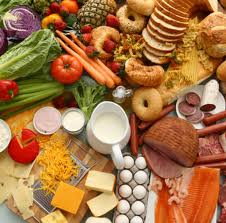
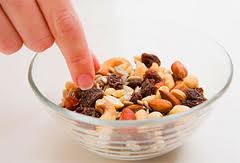
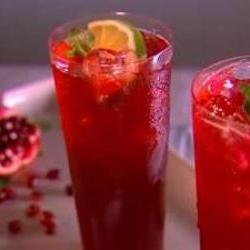 Recent reports in newspapers have suggest that you can increase your testosterone levels by drinking pomegranate juice. Here, Duncan looks at whether this is true, or unclear.
Recent reports in newspapers have suggest that you can increase your testosterone levels by drinking pomegranate juice. Here, Duncan looks at whether this is true, or unclear.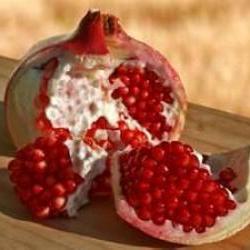 As these three studies have shown there is a variety of conclusions being made on whether pomegranate juice can improve testosterone levels.
As these three studies have shown there is a variety of conclusions being made on whether pomegranate juice can improve testosterone levels.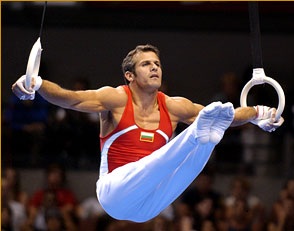 Gymnastics is a very powerful sport needing an incredible amount of strength and power in order to perform routines on the floor or on equipment.
Gymnastics is a very powerful sport needing an incredible amount of strength and power in order to perform routines on the floor or on equipment.

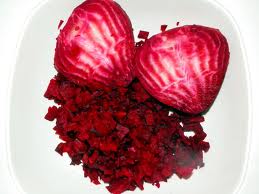 Beetroot is a good source of fibre, which helps to keep blood sugar levels steady and may reduce cholesterol. Unlike most other veg, which tend to have a low glycaemic index (GI), beetroot has a medium GI.
Beetroot is a good source of fibre, which helps to keep blood sugar levels steady and may reduce cholesterol. Unlike most other veg, which tend to have a low glycaemic index (GI), beetroot has a medium GI.